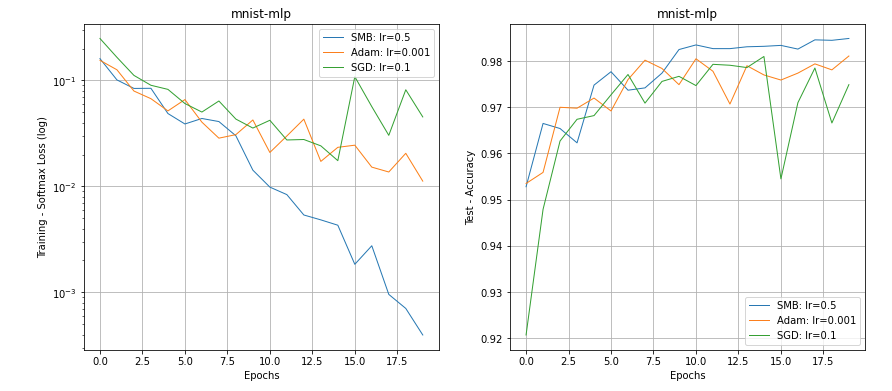This repository includes a new fast and robust stochastic optimization algorithm for training deep learning models. The core idea of the algorithm is based on building models with local stochastic gradient information. The details of the algorithm is given in our paper.
Abstract
Stochastic gradient descent method and its variants constitute the core optimization algorithms that achieve good convergence rates for solving machine learning problems. These rates are obtained especially when these algorithms are fine-tuned for the application at hand. Although this tuning process can require large computational costs, recent work has shown that these costs can be reduced by line search methods that iteratively adjust the stepsize. We propose an alternative approach to stochastic line search by using a new algorithm based on forward step model building. This model building step incorporates a second-order information that allows adjusting not only the stepsize but also the search direction. Noting that deep learning model parameters come in groups (layers of tensors), our method builds its model and calculates a new step for each parameter group. This novel diagonalization approach makes the selected step lengths adaptive. We provide convergence rate analysis, and experimentally show that the proposed algorithm achieves faster convergence and better generalization in most problems. Moreover, our experiments show that the proposed method is quite robust as it converges for a wide range of initial stepsizes.
Keywords: model building; second-order information; stochastic gradient descent; convergence analysis
pip install git+https://github.com/sibirbil/SMB.git
Here is how you can use SMB:
from smbsolve.smb import SMB
optimizer = SMB(model.parameters(), independent_batch=False) # independent_batch=True for SMBi optimizer
for epoch in range(100):
# training steps
model.train()
for batch_index, (data, target) in enumerate(train_loader):
# create loss closure for smb algorithm
def closure():
optimizer.zero_grad()
loss = torch.nn.CrossEntropyLoss()(model(data), target)
return loss
# forward pass
loss = optimizer.step(closure=closure)Set the hyper-parameter independent_batch to True in order to use the SMBi optimizer.
Our paper includes more information.
This will run all optimizers on Cifar100 dataset for 200 epochs with densenet121 network.
From commandline run:
$ reproduce_smb_paperResults will be saved in your home directory inside smb_experiments folder. One can specify -o option to indicate save path.
Edit sample_experiments_parameters.yaml file, (un-) comment lines according to the settings that you want to test. Preferably rename your file to e.g my_test.yaml and run
$ run_smb_experiments -p my_test.yamlOne can add -o option to indicate directory path to save results and plots as above. Logs are saved under the home directory inside smb_experiments_logs folder.
Plotting. While plots are automatically generated after running experiments, one can also provide a custom results folder (e.g. from old runs).
$ plot_smb_experiments -i path_to_experiment_results_folderHere optional integer valued --epochs option can be added to restrict range to [0, epochs]. Moreover --opts option restrics plots to to given optimizers:
$ plot_smb_experiments -i path_to_experiment_results_folder --epochs 50 --opts SLS ADAM SMBFrom Colab. Follow instructions from this notebook
